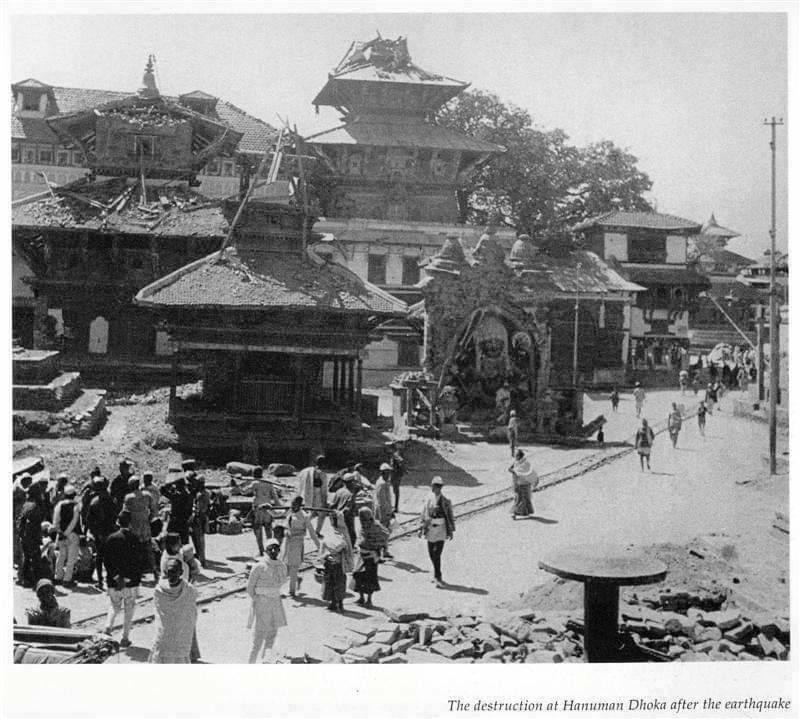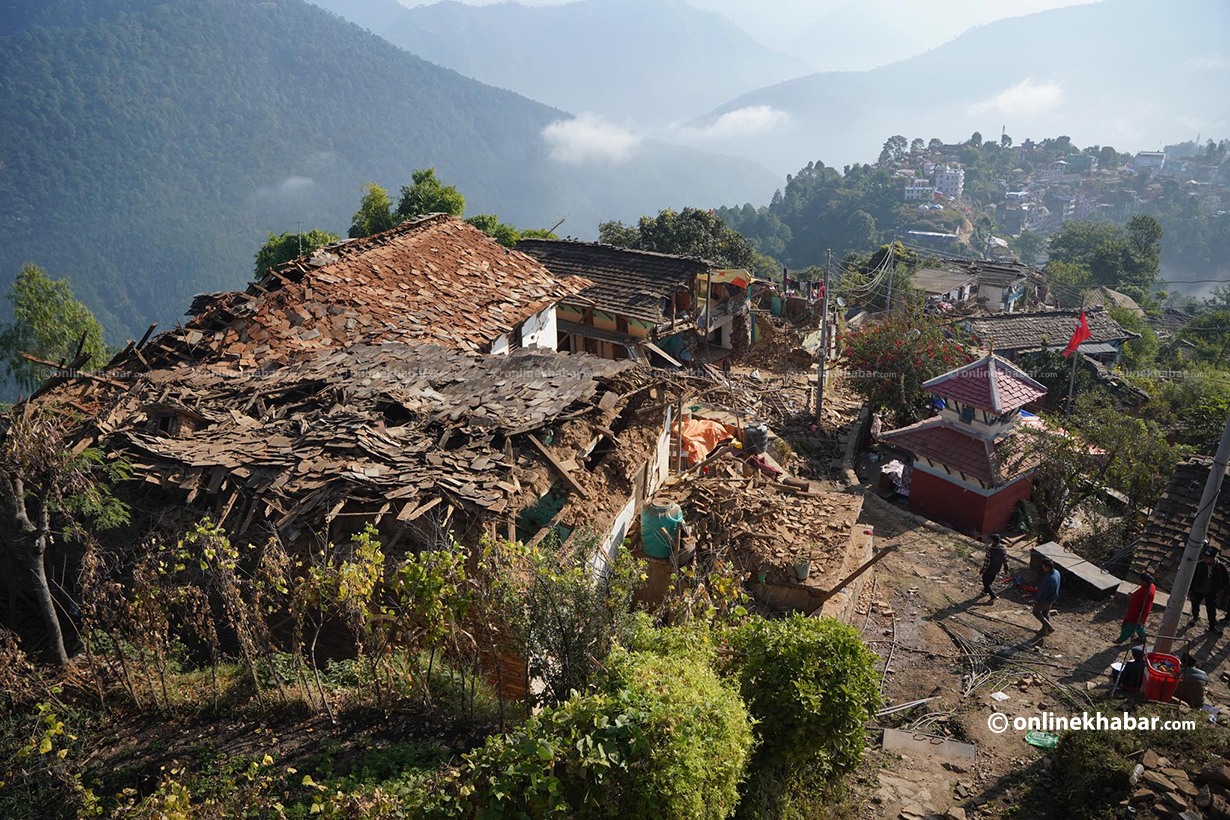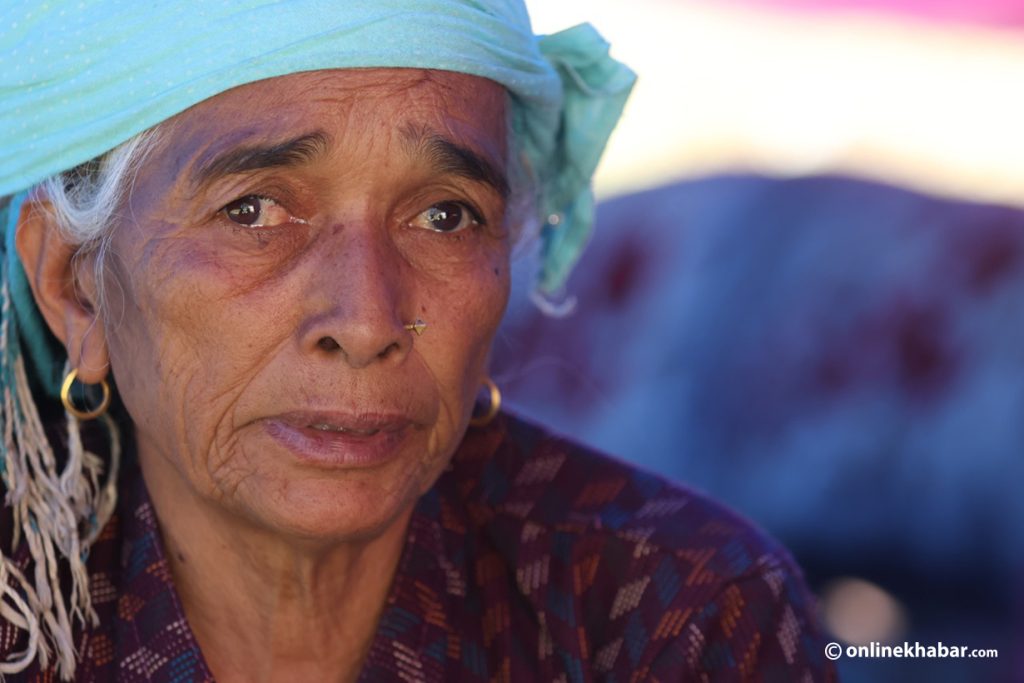Nepal on January 15 marks the 23rd National Earthquake Safety day. The day is marked to raise awareness about earthquake safety as Nepal’s location falls in the highest risk amidst the seismic zones as tectonic plates continue to move.
The day of January 15 (Magh 2 as per the Nepali calendar) has been chosen to mark the day to commemorate the lives lost in the earthquake on January 15, 1934.
The 8.0-magnitude quake is the most powerful earthquake that hit Nepal so far and is known as the “90 saalko bhuichalo” among the public (due to its Nepali calendar date). The impact of the earthquake was felt in places like Lhasa, Mumbai, Assam and Punjab.
Here are six key facts about the 1934 earthquake.
1. Magnitude
Different sources have given different magnitude to the earthquake. However, India and Nepal both claim that the magnitude was 8.0 which is the highest recorded earthquake in Nepal. There are memories and a book by Brahma Shamsher which states aftershocks kept on coming for two weeks.
2. No foreign aid, 100-rupee grant
The 1934 earthquake affected many lives. In order to help the people who had to restart their lives, Prime Minister Juddha Shumsher Rana gave everyone Rs 100.
Another interesting fact: the money did not come from foreign donors but from the government coffers itself. Culture expert Satya Mohan Joshi, who is 101 years old now, says an interest-free loan of up to Rs 3,000 was given by the government to rebuild their homes. The money, according to historians, came from a disaster fund created by Junga Bahadur Rana.
3. Dharahara collapse
The Dharahara has suffered in every major earthquake in Nepal. The tower suffered a similar fate in the 1934 quake as it did in 2015. The original 11-storey tall tower built by Bhimsen Thapa collapsed in 1934. Only two storeys of what was then called the Queen Lalit Tripurasundari Tower remained. Juddha Shumsher Rana rebuilt the Queen Lalit Tripurasundari Tower and renamed it Bhimsen Stambha.
4. Death toll
The death toll is believed to be worst than the 2015 earthquake. According to data found at various libraries across the Kathmandu valley, over 8,000 people lost their lives over 3,000 were injured. However, there are also claims that the number was a lot more. According to journalist Bhairav Risal, mostly women died in the 1934 quake as they were at home during the afternoon. This includes two daughters of King Tribhuvan Shah who were crushed in the Narayanhiti Palace. Prime Minister Juddha Sumsher’s daughter also died in the quake.
5. Damage
It is believed that the earthquake caused a lot of damage in Nepal and in parts of Bihar. Those old enough to tell the tale say that almost all buildings in Kathmandu valley, including the Dharahara, collapsed due to the quake. The 1934 quake damaged more than 200,000 buildings. Many say the roads cracked wide open.
However, the Pashupatinath Temple, which many believe is the protective deity of the valley, still stood tall amidst the chaos. Buildings built on the bedrock survived well than those built on unconsolidated sedimentary deposit available at most part of the valley.
6. Confusion about epicentre
The exact epicentre of the earthquake is still a mystery. People back then claimed that it was around eastern Nepal. However, due to the lack of proper resources and technology, the exact location is unsure. The destruction of Bihar states that the epicentre could have been just above Bihar, claimed Indian geologists. But, based on evidence, the epicentre is likely to be in the plains of the Terai a few 100 kilometres north of Bihar.
























